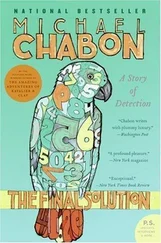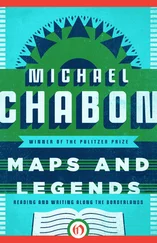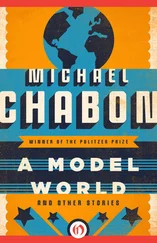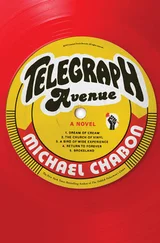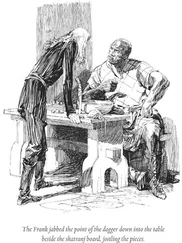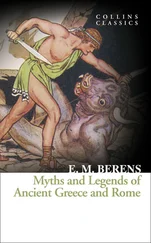The D’Aulaires capture all of this, reporting it in a straightforward, fustian-free, magical-realist prose that never stops to shake its head or gape at marvels and freaks and disasters, making them seem somehow all the stranger, and more believable. Their spectacular and quirky illustrations (a pair of adjectives appropriate to few illustrators that I can think of offhand) never found a more appropriate subject than the Norse world, with its odd blend of gorgeousness and violence, its wild prodigies and grim humor.
What makes the book such a powerful feat of visual storytelling is the way in which the prose and the pictures (reflecting, perhaps, the marriage and lifelong partnership of the authors, a Norwegian and a Swiss who lived in Connecticut and collaborated on picture books from the 1930s to the late 1960s) complement each other, advance each other’s agenda. Almost every page that is not taken up by a giant bursting lithograph of stars and monsters is ornamented with a smaller drawing or with one of the curious, cryptic, twisted little margin-men, those human curlicues of fire, that so disquieted me as a kid and continue, to this day, to freak out and delight my own kids.
Through this intricate gallery of marvels and filigree the text walks with cool assurance, gazing calmly into every abyss, letting the art do the work of bedazzlement while seeing to it that the remarkable facts—the powers and shortcomings of Thor’s hammer, Mjolnir, which always returned to its thrower but whose handle was too short to grasp without burning the hand; the strange parentage of Sleipnir, Odin’s eight-legged steed, who could carry his rider over land, sea, or air—are laid bare. This simultaneous effect of wonderment and acceptance, this doubled strength, allows the D’Aulaires to balance their re-creation of the Norse world exactly on its point of greatest intensity: the figure of Loki.
Ally and enemy, genius and failure, delightful and despicable, ridiculous and deadly, beautiful and hideous, hilarious and bitter, clever and foolish, Loki is the God of Nothing in Particular yet unmistakably of the ambiguous World Itself. It was in reading this book that I first felt the power of that ambiguity.
When the gods decide to put a wall around Asgard, a giant stonemason offers to do the onerous work, but demands as payment the hand of the love goddess Freya. This is clearly too steep a price, but Loki persuades the gods to cheat and deceive the mason, promising him Freya if he can complete the work in less than a year. Loki’s confidence in his cleverness is typical—no one could fence Asgard in less than a year!—as is his ability to sway others with that confidence, and as is, in the end, the inexorableness with which the stonemason and his gigantic draft horse proceed to build that giant fence of stone. The gods turn in panic and outrage to their glib cousin Loki, with his easy assurances. And then, with days to go and the work nearly done, a beautiful mare appears to distract and seduce the stallion, luring him away from the job site. So the wall goes unfinished, Freya is saved, and the enraged giant pays with his life. But the true ambiguity of Loki is yet to be revealed. The joke, in the end, is always on him: for the giant’s stallion succeeds in mounting and siring a foal on Loki, and after several months of embarrassed seclusion the brood-mare god returns to Asgard leading his horse-child behind him. And yet we still have not reached the end of the tale—the typical tale—of Loki’s fertile and fatal gift. Because Loki’s foal is a wonder horse, the magical Sleipnir, of whom Loki makes a present to his blood-brother Odin: a blessing brought forth out of treachery and lies.
Loki never turned up among the lists of Great Literary Heroes (or Villains) of Childhood, and yet he was my favorite character in the book that was for many years my favorite, a book whose subtitle might have been “How Loki Ruined the World and Made It Worth Talking About.” Loki was the god of my own mind as a child, with its competing impulses of vandalism and vision, of imagining things and smashing them. And as he cooked up schemes and foiled them, fathered monsters and stymied them, helped forestall the end of things and hastened it, he was god of the endlessly complicating nature of plot, of storytelling itself.
I grew up in a time of mortal gods who knew, like Odin, that the world of marvels they had created was on the verge, through their own faithlessness and might, of Ragnarok, a time when the best impulses of men and the worst were laid bare in Mississippi and Vietnam, when the suburban Midgard where I grew up was threatened—or so we were told—by frost giants and fire giants sworn to destroy it. And I guess I saw all of that reflected in the D’Aulaires’ book. But if those parallels were there, then so was Loki, and not merely in his treachery and his urge to scheme and spoil. Loki was funny—he made the other gods laugh. In his fickleness and his fertile imagination he even brought pleasure to Odin, who with all his well-sipping and auto-asphyxiation knew too much ever to be otherwise amused. This was, in fact, the reason why Odin had taken the great, foredoomed step of making Loki his blood brother—for the pleasure, pure and simple, of his company. Loki was the god of the irresistible gag, the gratuitous punch line, the improvised, half-baked solution—the God of the Eight-Year-Old Boy—and like all great jokers and improvisers, as often the butt and the perpetrator of his greatest stunts.
In the end, it was not the familiar darkness of the universe and of my human heart that bound me forever to this book and the nine worlds it contained. It was the bright thread of silliness, of mockery and self-mockery, of gods forced (repeatedly) to dress as women, and submit to the amorous attentions of stallions, and wrestle old ladies. The D’Aulaires’ heterogeneous drawings catch hold precisely of that thread: they are Pre-Raphaelite friezes as cartooned by Popeye’s creator, Elzie Segar, at once grandiose and goofy, in a way that reflected both the Norse universe—which begins, after all, with a cow, a great world-sized heifer, patiently, obsessively licking at a salty patch in the primal stew—and my own.
We all grew up—all of us, from the beginning—in a time of violence and invention, absurdity and Armageddon, prey and witness to the worst and the best in humanity, in a world both ruined and made interesting by Loki. I took comfort, as a kid, in knowing that things had always been as awful and as wonderful as they were now, that the world was always on the edge of total destruction, even if, in Maryland in 1969, as today, it seemed a little more true than usual.
*Then known by its original title, Norse Gods and Giants.
P ITY THOSE—ADVENTURERS, adolescents, authors of young-adult fiction—who make their way in the borderland between worlds. It is at worst an invisible and at best an inhospitable place. Build your literary house on the borderlands, as the English writer Philip Pullman has done, and you may find that your work is recommended by booksellers, as a stopgap between installments of Harry Potter, to children who cannot (one hopes) fully appreciate it, and to adults, disdainful or baffled, who “don’t read fantasy.” Yet all mystery resides there, in the margins, between life and death, childhood and adulthood, Newtonian and quantum, “serious” and “genre” literature. And it is from the confrontation with mystery that the truest stories have always drawn their power.
Like a house on the borderlands, epic fantasy is haunted: by a sense of lost purity and grandeur, deep wisdom that has been forgotten, Arcadia spoilt, the debased or diminished stature of modern humankind; by a sense that the world, to borrow a term from John Clute, the Canadian-born British critic of fantasy and science fiction, has “thinned.” This sense of thinning—of there having passed a Golden Age, a Dreamtime, when animals spoke, magic worked, children honored their parents, and fish leapt filleted into the skillet—has haunted the telling of stories from the beginning. The words “once upon a time” are in part a kind of magic formula for invoking the ache of this primordial nostalgia.
Читать дальше


